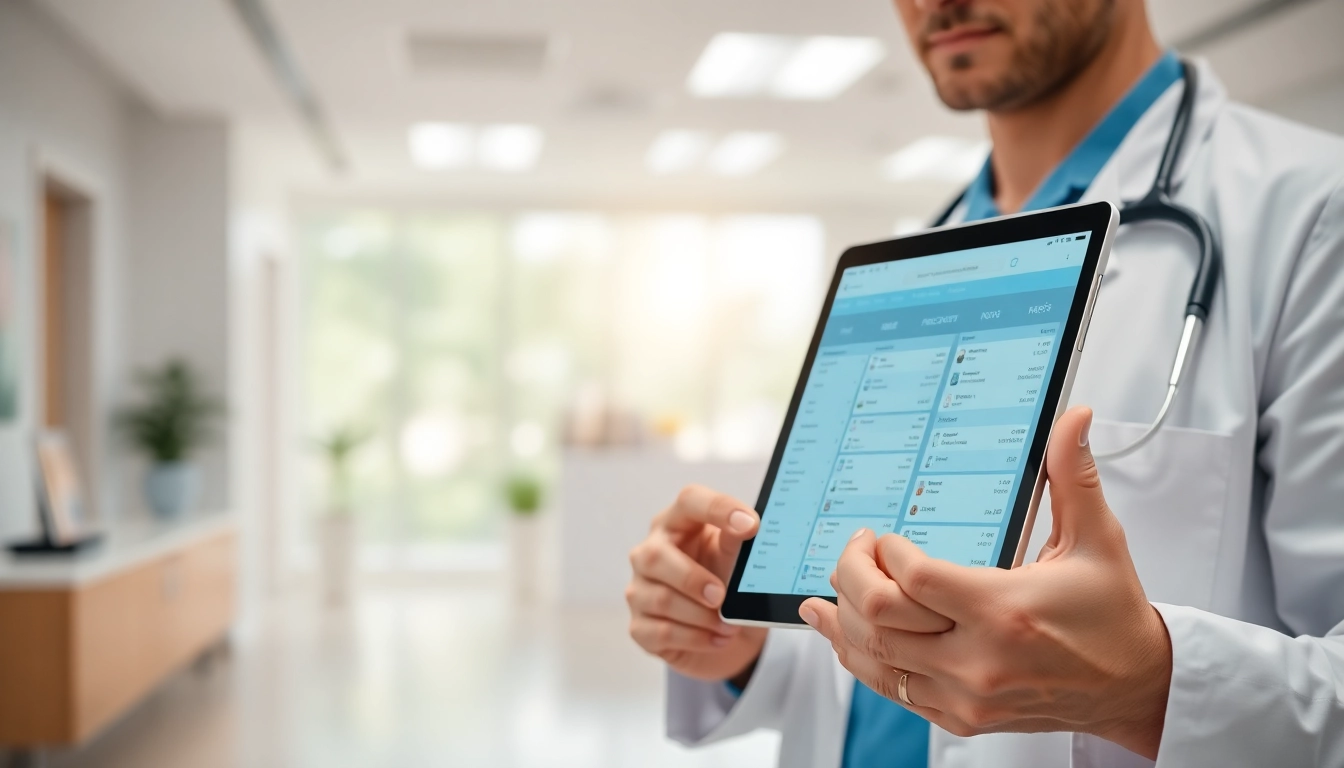
Understanding E-Prescription Apps
What Are E-Prescription Apps?
E-prescription apps represent a transformative approach to medication management within the healthcare system. These applications enable healthcare professionals to create, transmit, and manage prescriptions electronically. Instead of relying on traditional handwritten prescriptions, e-prescribing systems streamline the process for both providers and patients. By allowing prescriptions to be sent directly to pharmacies or patients’ smartphones, e-prescription apps enhance communication between prescribers, patients, and pharmacies.
Core Features of E-Prescription Apps
The key features of e-prescription apps make them an essential tool for modern healthcare. These features often include:
- Electronic Transmission: Prescribers can send prescriptions directly to the patient’s preferred pharmacy.
- Medication History Access: Healthcare providers can view patients’ medication histories to prevent drug interactions.
- Refill Requests: Patients can easily request medication refills via the app.
- Alerts and Notifications: Reminders for medication dosages, and notifications for prescription arrival at the pharmacy.
- Patient Education: Information provided about the medication, including dosage instructions and potential side effects.
How E-Prescription Apps Work for Patients
For patients, e-prescription apps simplify medication management significantly. After a healthcare provider has created an electronic prescription, it is sent directly to a pharmacy of the patient’s choice. Patients may receive notifications about their prescriptions, including when they are ready for pickup or when it’s time to request a refill. By integrating these applications into their healthcare routine, patients can ensure they adhere to their medication schedules without the hassle of paper prescriptions.
Advantages of Using E-Prescription Apps
Improved Accuracy and Reduced Errors
One of the primary advantages of using eprescription apps is the significant reduction in prescription errors. Traditional handwritten prescriptions can lead to misinterpretation due to illegible handwriting or medical jargon, resulting in potentially dangerous mistakes. E-prescribing apps eliminate this issue by providing clear, standardized formats for prescriptions. Additionally, integrated drug databases alert prescribers to any potential drug interactions, allergies, or contraindications, thus enhancing overall patient safety.
Enhanced Medication Adherence
Adherence to medication regimens is crucial for the effective management of chronic conditions. E-prescription apps enhance medication adherence by providing patients with automated reminders about dosages and refill dates. Studies have shown that when patients are reminded about their medications, adherence rates improve considerably. Furthermore, features like medication tracking and access to educational resources empower patients, making them active participants in their health management.
Streamlined Prescription Management
Managing prescriptions can be a complex task, particularly for patients on multiple medications. E-prescription apps simplify this process by consolidating all medication information in one accessible location. Patients can easily track their prescriptions, including dosages and refill dates, via mobile devices. This streamlined management not only saves time but also helps avoid missing doses and ensures timely requests for refills.
Patient-Centric Benefits of E-Prescription Apps
Convenience and Accessibility for Patients
The convenience offered by e-prescription apps cannot be overstated. Patients can access their prescriptions from anywhere, at any time. This accessibility enables them to monitor their medications and communicate with healthcare providers more effectively. Instead of having to make trips to the doctor’s office for prescription renewals, patients can simply use their smartphones to manage their healthcare. This immediate access improves overall patient experience and satisfaction.
Lower Costs and Time Savings
Utilizing e-prescription apps can lead to lower healthcare costs and substantial time savings. By reducing unnecessary office visits and streamlining the refill process, both patients and healthcare providers save valuable time and resources. The efficiency of e-prescribing can also lead to cost savings on office administrative tasks, allowing healthcare providers to redirect their focus to patient care instead.
Increased Patient Engagement in Health Management
E-prescription apps encourage greater patient engagement and ownership for health management. By providing tools to track medications and offering educational resources, patients are more informed and actively involved in their treatment plans. This heightened engagement has been associated with improved health outcomes, as patients who understand their medications and health conditions tend to follow their treatment regimens more closely.
Implementation Challenges and Solutions
Addressing Technological Barriers
While the benefits of e-prescription apps are extensive, there are challenges related to technology adoption. Some patients may be reluctant to use these apps due to a lack of digital literacy or access to devices. To address this, healthcare organizations can implement training programs that educate patients on how to use these applications effectively. Providing support through in-person sessions or online tutorials can bridge the technology gap and encourage greater utilization.
Training Healthcare Providers
For e-prescription apps to be effective, healthcare providers must be adequately trained in their use. This includes familiarizing themselves with the software and understanding how to communicate its benefits to patients. Regular training sessions can ensure that healthcare providers feel confident using these apps, enabling them to encourage their patients to take advantage of the features available.
Ensuring Patient Data Security
Security remains a top concern when implementing any digital health solution. E-prescription apps must comply with regulations like HIPAA to ensure patient data is protected. Implementing robust security measures, such as encryption and secure password protocols, is crucial. Additionally, educating both patients and healthcare providers about best practices in data protection can help mitigate potential security risks.
Future Trends in E-Prescription Apps
Integration with Telehealth Services
As telehealth continues to grow in popularity, the integration of e-prescription apps with telehealth services will likely increase. This integration allows for seamless consultation and prescription issuance, enhancing patient convenience. Patients can receive care and prescriptions in one comprehensive service, further streamlining their healthcare experience and improving adherence through immediate access.
Artificial Intelligence in E-Prescription
The future of e-prescription apps may also involve the incorporation of artificial intelligence (AI) tools. AI can analyze patient data and provide personalized medication suggestions, flagging potential drug interactions or allergy concerns automatically. Such advancements would not only enhance accuracy but could also lead to more tailored treatment plans for patients.
Potential Impact on Healthcare Systems
The transition to e-prescription apps has the potential to create a marked impact on healthcare systems as a whole. With increased efficiency in managing prescriptions, healthcare providers can focus more on patient care rather than administrative tasks. Additionally, improved medication adherence leads to better health outcomes, which can alleviate strains on healthcare resources. As adoption rates increase and technology continues to evolve, e-prescription apps may become standard practice within medical settings, reshaping how prescriptions are managed in the broader healthcare landscape.







